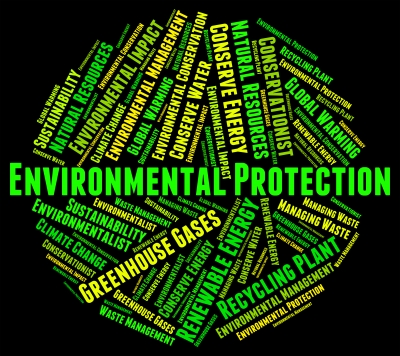

Concerned citizens and resort owners in Davao have filed with the Supreme Court (SC) a Writ of Kalikasan and temporary environmental protection order seeking to stop the Department of Transportation and Communications (DOTC) from implementing the P19.8-billion Davao-Sasa Port modernization project.
The Writ of Kalikasan (nature) is a legal remedy under Philippine law that provides protection of one’s Constitutional right to a healthy environment, as enshrined in Article II Section 16 of the 1987 Constitution. That section proclaims the “state shall protect and advance the right of the people to a balanced and healthful ecology in accord with the rhythm and harmony of nature.”
The case was filed on March 16 by former Davao City councilors Pilar Braga, Peter Tiu Laviña, Antonio H. Vergara and Diosdado Angelo Mahipus; Kalipunan ng Damayang Mahihirap (alliance of urban poor organizations) spokesperson Benjie T. Banal; and the Samal City Resort Owners Association against the DOTC through Transport Secretary Joseph Emilio Abaya; the DOTC pre-qualification, bids and awards committee; and the Philippine Ports Authority.
The Davao-Sasa port modernization project involves the expansion of the existing port and the construction of dedicated container-handling facilities with a design capacity of approximately 1.2 million twenty-foot equivalent units comprising, among others, the construction of a new apron, linear quay, expansion of back-up area, container yards, warehouses and the installation of new container-handling equipment. The contract also covers operation and maintenance of the port for 30 years.
The project has four qualified bidders: San Miguel Holdings Corp.-APM Terminals Management (Singapore) Pte. Ltd. Consortium; Asian Terminals Inc. and DP World FZE Consortium; Bollore Africa Logistics; and International Container Terminal Services, Inc.
The DOTC has set the deadline for bid submission on March 28, 2016.
READ: Bidding for P20B Davao-Sasa port postponed for the third time
The petitioners claimed the bidding for the Davao-Sasa project is being conducted “without the necessary Environmental Compliance Certificate and therefore, without the necessary studies on the environmental impacts of the proposed port expansion on the shores of Davao City as well as the famous tourism destinations in the Island Garden of Samal. Even the separate studies of the Philippine Ports Authority (PPA) and the DOTC for the modernization and development of the Davao Sasa port do not contain the environmental impact assessment of their respective proposed projects.”
They claimed port operations bring about environmental and noise pollution, increased carbon trail, and serious damage to marine ecosystems in mainland Davao and Samal island.
There was also no consultation with affected communities; the approval of the concerned local government units have not been complied with, they added.
The Davao City Council issued a resolution on 14 December 2015 expressing its objection to the project.
The petitioners likewise questioned the contract price of the project.
They stated that in 2012, the PPA, through Science & Vision for Technology, Inc., conducted a feasibility study on the condition of Sasa Port and its potential new targets in import and export volume increase in the event of an expansion. The report placed at P3.5 billion funds required for the project, including purchase of new equipment and installation of new facilities.
The DOTC, however, commissioned another firm, Hamburg Port Consultants, to conduct a second feasibility study. Conducted in 2013, the study was used as one of the primary considerations for the current expansion project of Sasa Port.
“It is of note that this second study does not provide any itemized table and only shows a whopping lump sum cost of the project amounting to P18 billion or more than a shocking five times the cost projected in the previous study,” the petitioners stated.
They said the project’s “true and total cost – not just economics but social and environmental as well – is not being reflected in the proposed terms.”
Petitioners also noted there are other viable alternative ports in the region, such as the Davao International Container Terminal and Hijo International Port. With the alternatives, “especially considering that most of the banana and fruit exports of the Davao region come from the north of Davao City where these two alternative ports are located, the necessity and desirability of the expansion and modernization of the Davao Sasa Port is put into serious question.”
READ: Davao International Container operator calls for level-playing field at Davao-Sasa
In addition, the petitioners noted access roads leading to Sasa Port are already suffering from severe traffic congestion, even during non-peak hours, and that the project would cause “even more severe traffic jams”, triggering “a domino effect” disadvantageous to businesses and residents of Davao City.
The acquisition of the right of way and the relocation/resettlement of the informal settlers, which are part of the conditions of the Regional Development Council of Region IX for approving the project, have not been complied with by the respondents.
Moreover, petitioners said the “respondents are bent on keeping the whole bidding process secret such that instead of making the bidding public, it has imposed the rule of confidentiality and for such purpose has restricted internet access of the public to the documents and announcements with respect thereto.”
The petitioners acknowledged that “while the Court of Appeals has concurrent jurisdiction over a Petition for a writ of kalikasan and continuing mandamus,” the Supreme Court is the proper venue to decide on the petition “given the prayer for a temporary environmental protection order which, to all intents and purposes, is a restraining order applied for to halt what is otherwise a national government infrastructure project on environmental grounds.” – Roumina Pablo
Image courtesy of Stuart Miles at FreeDigitalPhotos.net




